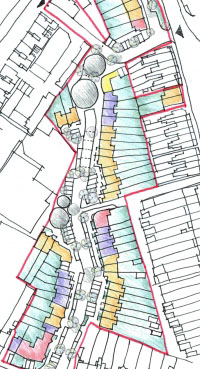Development Feasibility/ Economics Studies
Experience has proven the cost effectiveness of completely evaluating the physical and jurisdictional constraints associated with a potential project site prior to site selection and/or purchase. Too often, projects become shelved late in the application process because an undiscovered wetland severely limits development options, the study of a locally sensitive archaeological resource creates exorbitant development costs, soils are unsuitable for wastewater treatment purposes, or a sufficient groundwater supply cannot be found.
Tim Miller Associates, Inc. assists clients in selecting the best possible site for their next project before significant investments are made. After examining the project requirements (type of development, desired scope and size, building types and sizes, etc.), Tim Miller Associates, Inc. will then evaluate potential project sites based on the following physical criteria:
- Presence of wetlands
- Presence of steep slopes
- Presence of shallow or exposed bedrock
- Soils septic suitability
- Preliminary groundwater supply evaluation
- Potential access points
- Necessity of stream/wetland road crossings
- Presence of potentially significant historic and/or archaeological resources
The existing conditions of the proposed development site will then be examined in conjunction with and in relation to the regulatory constraints of the appropriate state, county and municipality within which the site lies, particularly:
- Zoning regulations
- Subdivision regulations
- Wetlands regulations
- Slope ordinances
- Health regulations (septics, sewerage, water supply)
- Environmental assessment
- Tree protection ordinances
- Open space and recreation requirements
- Low and moderate income housing requirements
Tim Miller Associates, Inc. will then prepare a summary outlining the development feasibility of the project site under current regulations, as well as potential alternatives and the likelihood of obtaining any necessary variances or permits. Based on these analyses, a final recommendation can be made which will significantly reduce the economic risks normally associated with land development projects.
With landscape architects on staff, TMA can also prepare site plan and subdivision layouts evaluating potential development yield for various uses including roads, parking, lot layout and building footprints.

